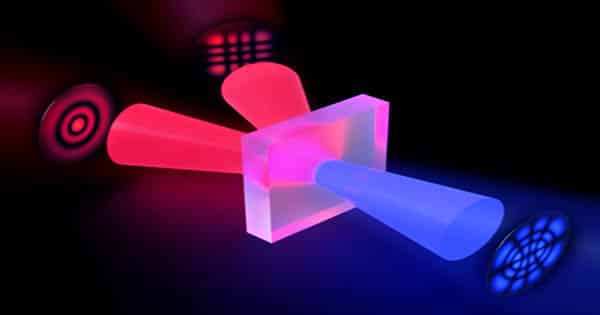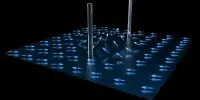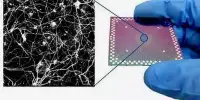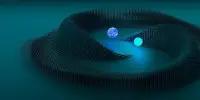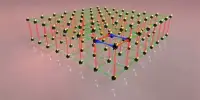Light patterns have enormous promise for a vast encoding alphabet in optical communications, but development has been hampered by their susceptibilities to distortion, such as in atmospheric turbulence or bent optical fiber.
Researchers at the University of the Witwatersrand (Wits) have proposed a new optical communication protocol that uses spatial patterns of light for multi-dimensional encoding without requiring the patterns to be recognized, overcoming the previous limitation of modal distortion in noisy channels. As a result, a novel state-of-the-art encoding of over 50 vectorial patterns of light conveyed almost noise-free over a turbulent atmosphere has been developed, paving the way for a new approach to high-bit-rate optical communication.

The Wits researchers from the Structured Light Laboratory at the Wits School of Physics employed a novel invariant property of vectorial light to encode information in a paper published in Laser & Photonics Reviews. This parameter, which the team refers to as “vectors,” ranges from 0 to 1 and remains constant when flowing via a noisy channel.
The researchers used the invariance to partition the 0 to 1 vector range into more than 50 parts (0, 0.02, 0.04, and so on up to 1) for a 50-letter alphabet, as opposed to classical amplitude modulation, which is simply 0 or 1 (only a two-letter alphabet). Because the channel through which the information is transmitted does not alter the vectors, both the sender and the receiver will always agree on the value, resulting in noise-free information transfer.
“To create and detect the vectors modulation requires nothing more than conventional communications technology,” says lead author and candidate Keshaan Singh, “allowing our modal (pattern) based protocol to be deployed immediately in real-world settings.”
The researchers have already begun demonstrating the concept in optical fiber and rapid connectivity over empty space, and they believe it can work in other noisy channels, including underwater.
